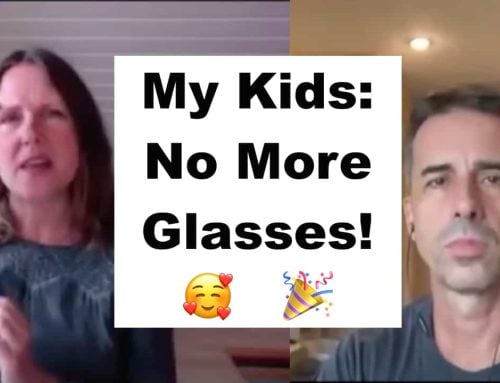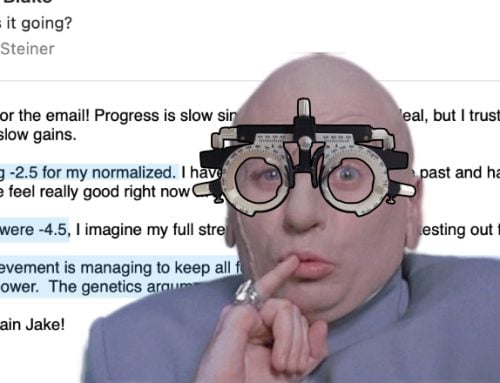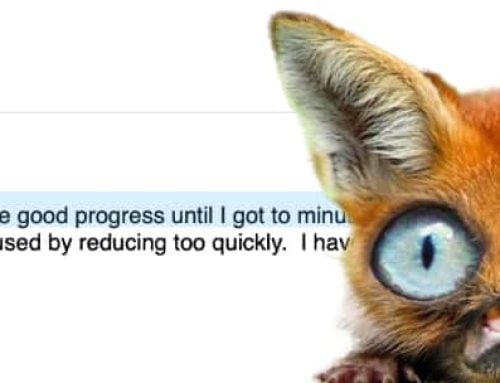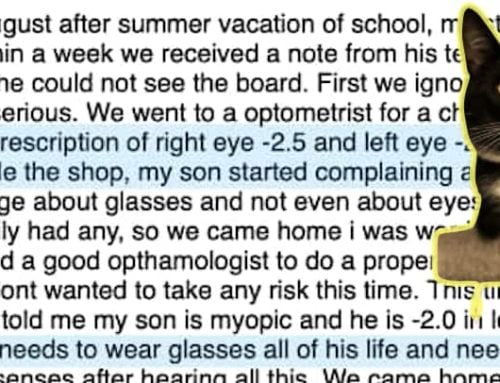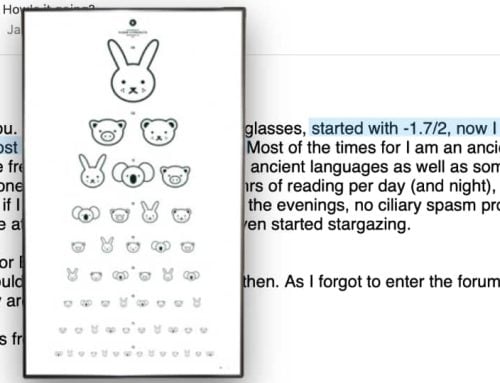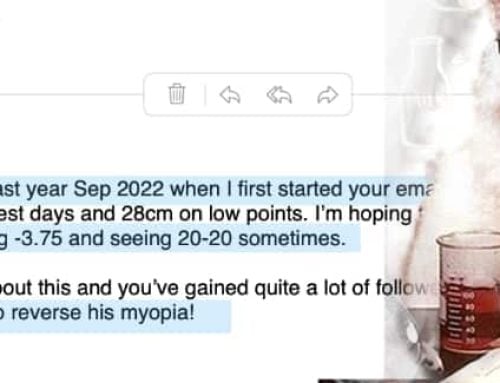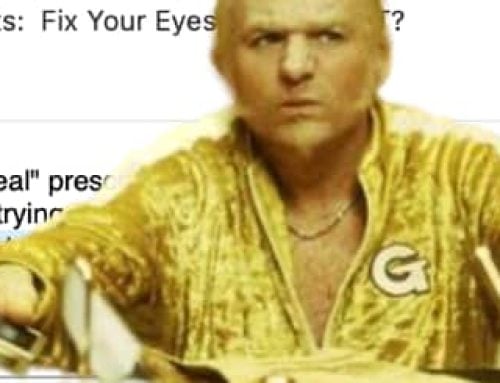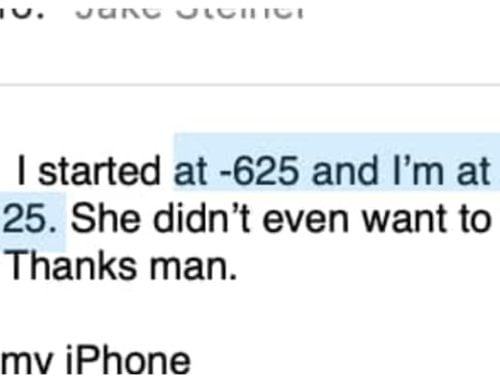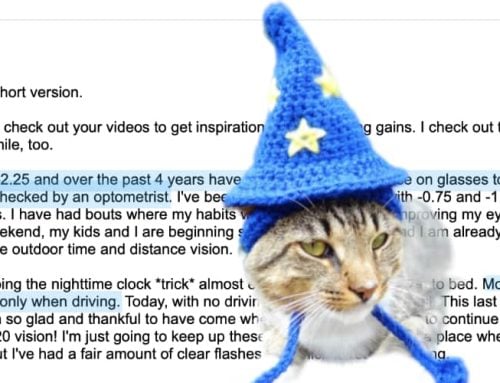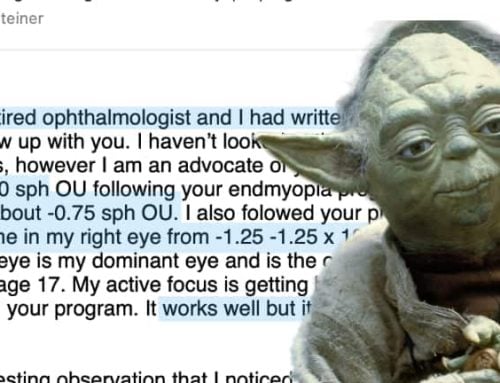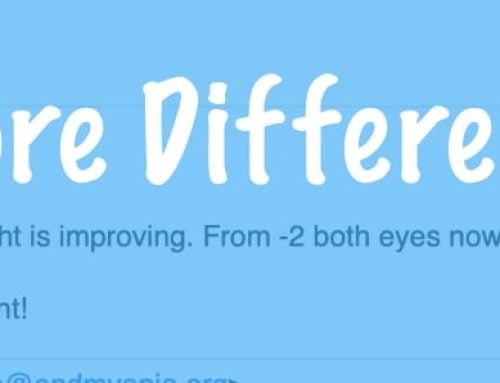Claire asks, in the forum:
I’ve had a -1.75 prescription (reduced from -2.25) for about 2 months. I did one month of the program and plan to do the 2nd month but for the moment I am just using what I learned from month 1 about focus pushing while reading, lots of breaks, outdoor walking.
My question is, when you have a reduced prescription, are you supposed to wait until it becomes constantly blazing sharp to reduce it again? With this -1.75 if the lighting is really good I can read the 20/20 line. Most of the time lately I have read the 20/20 line successfully. This morning, when it was really sunny, I read the 20/15 line almost perfectly.
The centimeter reading I get without any glasses on varies between 49 cm and 52 cm, depending on the lighting and strain level. Should I wait longer to reduce my prescription, until it becomes consistently sharp, or not?
While I provided an answer in the original thread, here are some more thoughts:
Imagine you sprained an ankle, because you overdid your last hike. You go to the doctor. The doctor tells you to get a wheelchair, because that’s really the best way to a) not feel that ankle strain today and b) it’s the most certain way to avoid any ankle strain, ever again, in the future.
That is the single prescription paradigm, the thing most optic shops prescribe, to deal with your (initially purely just temporary) eye strain.
The wheel chair is indeed the best fix. It makes your ankle not hurt today, nor do you ever sprain your ankle again. As such, no argument, the solution does work. It also makes you entirely dependent on wheel chairs after some time, your legs become less and less capable to get you anywhere, but that’s the compromise.
Here though, we don’t prescribe wheel chairs. We prescribe crutches. The difference?
The crutches let you walk, minimize stepping on that sprained ankle, but put just enough stimulus in your legs so that they keep working properly, and that the damage has room to recover – while also regaining its original strength. It’s less immediate and simple than the wheel chair, but in the long term, you don’t have to depend on anything to keep you walking.
Long story, to the point:
You don’t want to go without glasses, if you have myopia strong enough to leave you in a world of blur. That would be the equivalent to crawling, refusing wheel chair and crutch alike. This does nothing to strengthen your legs – nor does refusing glasses help you recover your vision.
The amount of reduction falls into a range of your personal preference:
You can take it easy, and make small reductions, relatively infrequently, leaving you with a clearer image, and less focusing effort. The upside is that there is less work, you do improve your vision, but as downside, it will take longer.
On the other end, you can be aggressive, and use only the minimum strength to get the clarity you need, all while requiring you to always be working on active focus – especially applicable to normalized prescription (your distance vision glasses).
The latter will have you improving faster, relatively, but is also more challenging since you get less easy sharpness.
What, is best?
It really depends on you. I have had clients who started very aggressively while they had higher myopia, and then relaxed the pace once they started seeing clearly enough to where the crutch factor was not a major impediment for clear sight (a rather common case).
Likewise, some clients prefer to just eliminate the strain, and very slowly back off on prescriptions. This makes the process less intrusive on day to day life, almost like no effort at all, but in the long run, these clients are improving as well.
Once you know your eyes, once you have improved somewhere between 20% and 1 diopter, you can more easily assess what your own comfort zone is. And likewise, you can take a small reduction sometimes and relax for a few months, and then dip into the work again, with a larger subsequent reduction.
As long as you don’t use your full prescription up close, and always, always stay aware of (and minimize) close-up strain, the rest is just a matter of your preference for pace of improvement, vs. required effort to see clearly.
Enjoy!



